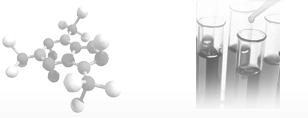|
Phosphatization is to build an insoluble phosphate layer on surfaces by treating the metal surfaces cleared of lubricant, rust, grease, oxide layers with a metal phosphate (zinc, iron or manganese phosphate) solution. This treatment is especially used on iron-steel surfaces and it can also phosphatize such types of metal surfaces as the aluminium, zinc, cadmium and magnesium.
What are the advantages of using surface treatment chemicals?
The surface is cleared of any type of lubricant, rust and stain.
By means of the coat that has been applied, asperity has occured, surface area has been increased and the conditions, which are necessary for paint to adhere properly, has been laid.
Thermal expansion features are in the middle point of metal and paint. As a result of it, phosphate layer removes the sudden changes between metal and paint caused due to thermal expansion.
Phosphate layer provides the paint to adhere on the surface properly and furthermore, it retards the rust under the pellicle to expand when the paint is mechanically damaged.
Phosphatization Application;
Phosphate solution includes the metal hydrogen phosphate which has dissolved in phosphoric acid. These metal hydrogen phosphates dissolve only in efficient acid. In the first step of the phosphatization application, iron on the surface and the hydrogen ions in solution react. While the iron on the surface is dissolving, it causes hydrogen gas output. As a result of hydrogen ions' decrease, the acid density of the part which will be phosphatized decreases and metal hydrogen phosphates build a very thin layer on the surface by precipitating.
Phosphatization Types;
It is applied under three categories:
-Iron Phosphate -Zinc Phosphate -Manganese Phosphate
Iron Phosphate; It is a kind of amorphous coating which works with iron oxide, iron phosphate mechanism. The rainbow colour which is mostly blue is seen on the iron-steel surfaces in this kind of coating. It provides resistance against corrosion, and effects the surface adhesion and elasticity of the paint positively. Iron phosphate types such as wiping, immersing and spraying are used. It is cheaper than the other surface treatment applications and bath control is easier. When the cost and the resistance against corrosion is regarded as important, iron phosphate is preferred.
Zinc Phosphate; under corrosive circumstances, it is used if the endurance of the material is desired. An increase is in paint adhesion on a zinc phosphate coated surface is seen. Zinc phosphate crystals lead to a porous layer on the surface and they can cling mechanically by absorbing the paint pellicle. By means of this property of zinc phosphate, far more stable surfaces against corrosion are obtained. Besides, surfaces are treated considerably in zinc phosphate systems and the control of the baths are harder.
Manganese Phosphate; it has a black-coloured and an uneven chemistry. It leads to a crystal porous layer on iron-steel surfaces. Manganese Phosphate acts as a layer on the surface of the metal. It is commonly used in gear, piston and weapon industry due to its lubricant absorption and long term lubricant maintenance properties. It makes the non-stationary machinery parts move easily. It reduces the friction between metals. Compared to zinc phosphate, it is more stable under higher pressure and higher temperature. The temperature in the immersion tank is higher and the waiting time is longer compared to zinc phosphate's.
|
